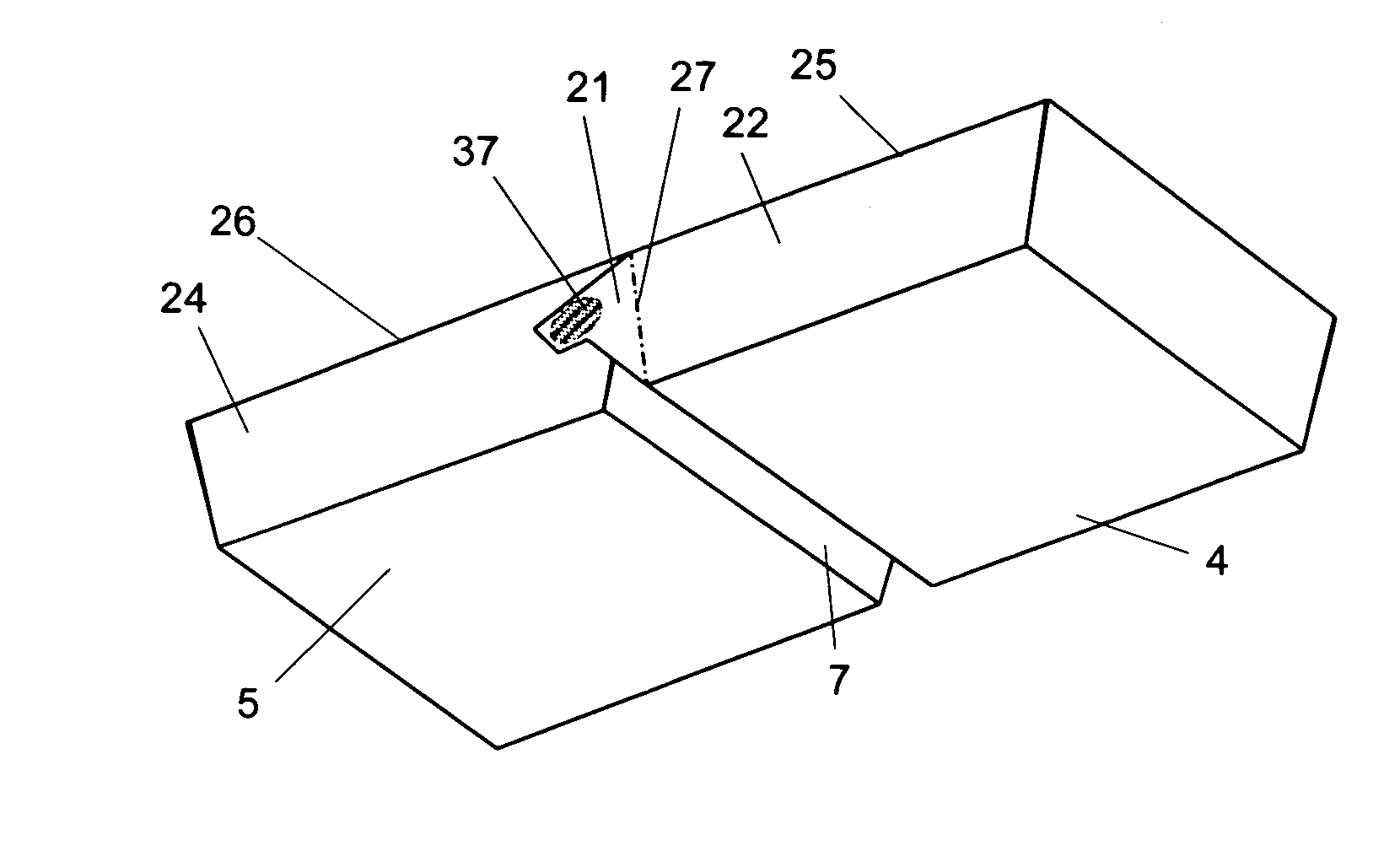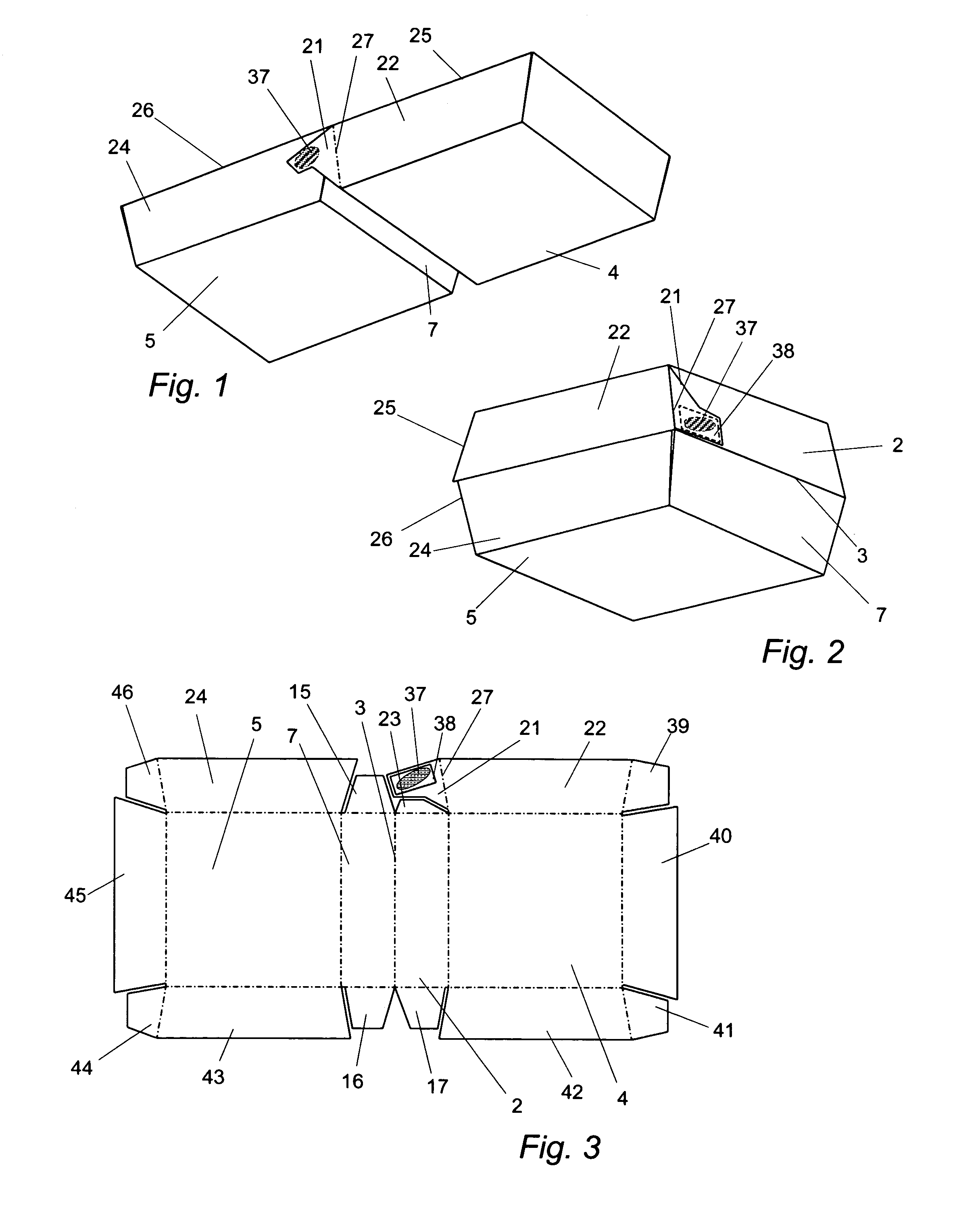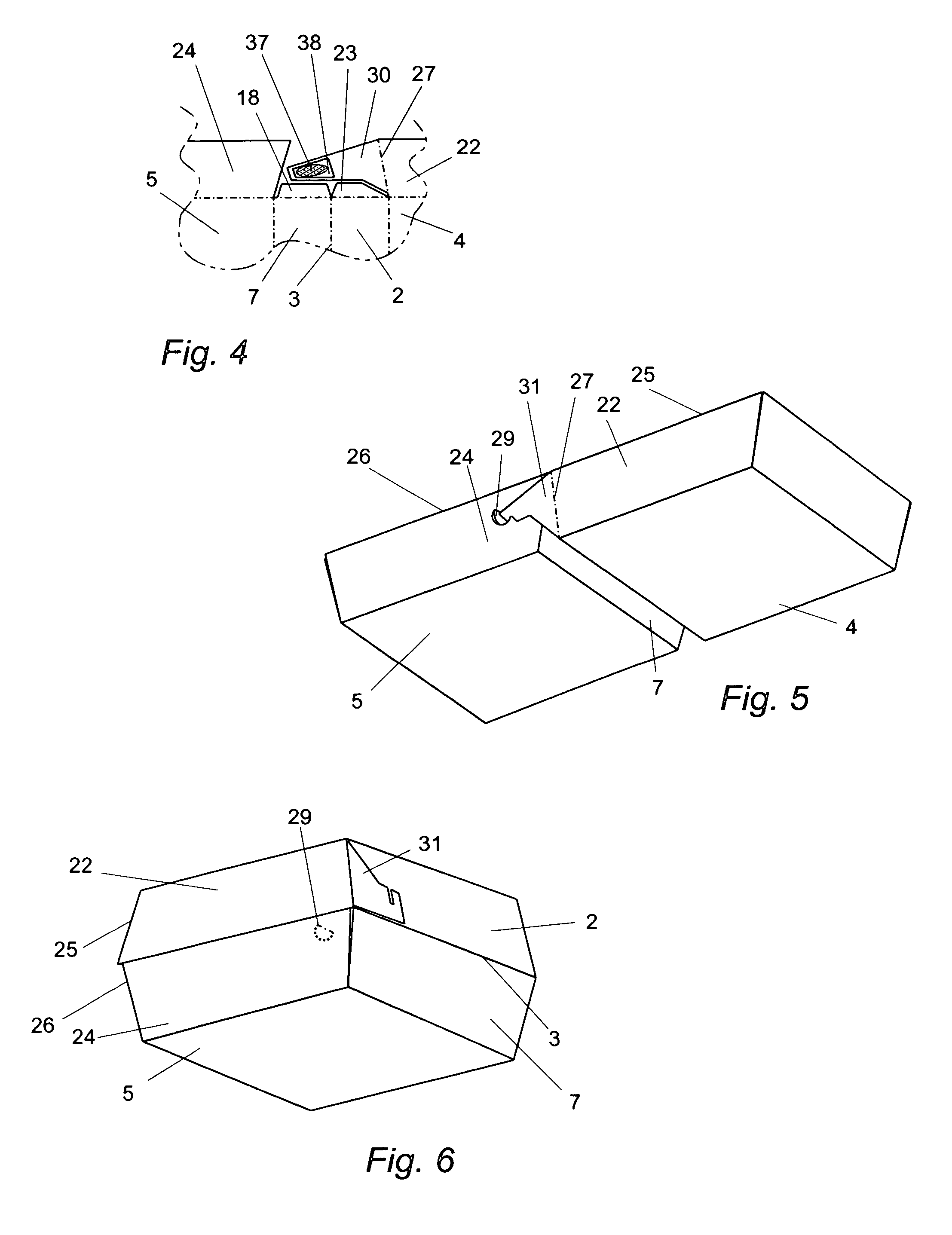Clamshell container hold open mechanism
a technology of open mechanism and container, which is applied in the field of containers, can solve the problems of unintended full or partial closure of containers, affecting the safety of containers, and most existing containers suffering from a lack of means to secure, so as to minimize tensile and compression forces, maximize the moment arm length of the force couple, and maximize the moment resisting force
- Summary
- Abstract
- Description
- Claims
- Application Information
AI Technical Summary
Benefits of technology
Problems solved by technology
Method used
Image
Examples
Embodiment Construction
[0031]The clamshell container of the preferred embodiment is constructed from a thin sheet of material, such as paperboard or polystyrene foam, and is cut and formed into the desired shape by a variety of processes, such as die-cutting / stamping. The clamshell container is assembled by folding flaps and walls along the folding score line, and adhering adjoining components together. The interconnection are most often joined with adhesive but may also be joined by other methods, such as taping or stitching.
[0032]In FIG. 1, shell 25 is hingedly attached to shell 26. Securing tab 21 is hingedly attached to side wall 22 at fold line 27. Adhesive 37, shown by means of stippling, or other suitable securing method is used by the user to selectively attach securing tab 21 to side wall 24 of the opposite shell. This creates a structural beam element which is capable of resisting closure of the container by rotating the shells towards each other.
[0033]In FIG. 2, securing tab 21 is shown folded ...
PUM
 Login to View More
Login to View More Abstract
Description
Claims
Application Information
 Login to View More
Login to View More - R&D
- Intellectual Property
- Life Sciences
- Materials
- Tech Scout
- Unparalleled Data Quality
- Higher Quality Content
- 60% Fewer Hallucinations
Browse by: Latest US Patents, China's latest patents, Technical Efficacy Thesaurus, Application Domain, Technology Topic, Popular Technical Reports.
© 2025 PatSnap. All rights reserved.Legal|Privacy policy|Modern Slavery Act Transparency Statement|Sitemap|About US| Contact US: help@patsnap.com



